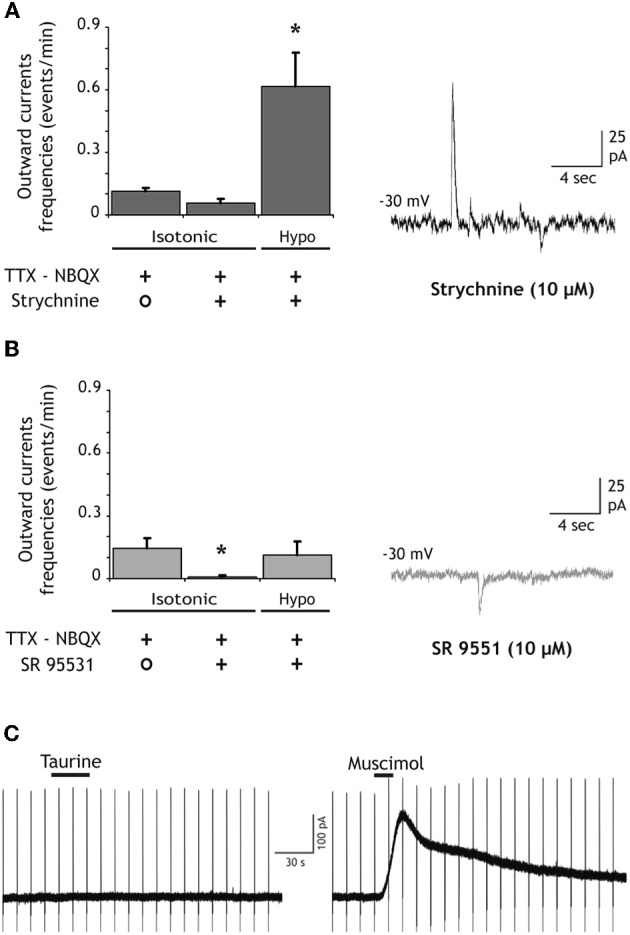Figure 4.

SOCs are due to the activation of GABA-A receptors. (A) The competitive antagonist of glycine receptors strychnine (10 μM) does not inhibit SOCs nor does it prevent the increase of SOC frequency induced by hypotonic extracellular solutions (n = 9 granule cells). The trace on the right illustrates SOCs and SICs recorded in the presence of strychnine during the application of the hypotonic solution. (B) The competitive antagonist of GABA-A receptors SR95531 (GABAzine, 10 μM) strongly reduces the SOC frequency and prevents its increase during the application of hypotonic extracellular solutions (n = 11). The trace on the right shows a granule cell recording in the presence of GABAzine during the application of the hypotonic solution. All recordings were performed at −30 mV in the presence of NBQX (10 μM) and TTX (1 μM). (C) Taurine does not activate GABA-A receptors of DG granule cells. The left trace shows the absence of response to bath applied taurine (300 μM, 30 s) in a neuron held at −30 mV in the presence of strychnine (10 μM), TTX (1 μM), d-AP5 (40 μM) and NBQX (10 μM). An outward current was induced in the same neuron by muscimol (50 μM, 15 s). Membrane current during applications of 0.2–1 mM taurine varied of average by 2 ± 0.5 pA in DG granule cells (n = 7) and by 1.6 ± 2.5 pA in CA3 pyramidal cells (n = 4). Vertical deflections in panel C correspond to capacitive currents during voltage step commands used to measure membrane and pipette parameters.
